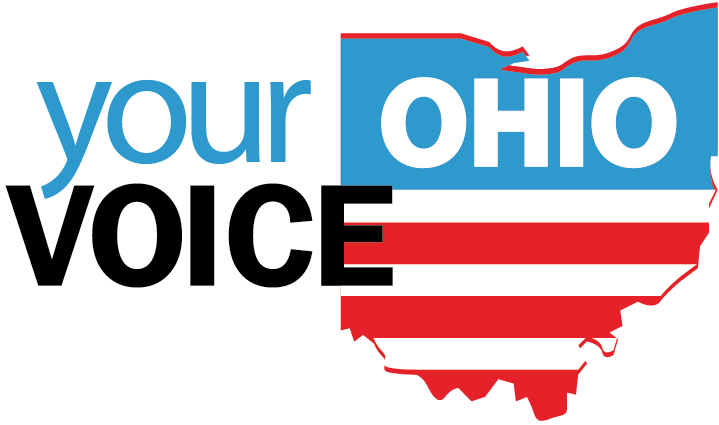The economics of journalism are not straightforward. Most businesses operate with a simple formula: offer products and services for sale and people choose to buy them or not. But the products and service of journalism, unlike other consumer goods, play a vital role in our society. As Shankar Vedantam, from NPR’s Hidden Brain, puts it, “If I decide not to buy a watch, I save money. But if I decide not to pay for a fire department, I might save money in the short run but end up paying more in the long run.” Newspapers plays an indispensable role in upholding democracy and are vital to the civic and financial health of communities, just like public schools or fire departments. But unlike those other services, most newspapers are also private entities that must succeed financially in order to survive.
For decades, most commercial print media have employed the “eyeball” business model – give away content to attract eyeballs, and sell those audiences to advertisers. But that model has problems in the digital realm: low online advertising rates and the small fraction of users who click on ads. While some newspapers have actually been attracting huge numbers of readers to their websites, with the content mainly available for free, and the online advertising rates far lower than in print, the revenue earned online has not been enough to make up for the drop in earnings on the print side.
Given the tenuous financial situation facing local newspapers today, it’s possible many will not survive; in the past 15 years alone, about 2,000 newspapers have closed across the U.S. While there seems to be a consensus that the economic downturn of the early 21st century has converged with fundamental technological and ideological changes that are transforming news media, few agree on what should be done—or even can be done—about it. But not everything is doom and gloom. Recent advances in technology have enabled journalism to flourish in remarkable ways, from instant global distribution to community participation and more powerful story-telling techniques. In the next few weeks, we will dive into some current and emerging business models in journalism, starting with non-profit cooperatives and other community models.
Non-Profit
Much of the conversation about new media models for journalism has focused on alternative ownership structures that might allow news organizations to focus more on their public mission, instead of clicks and returns to investors. The non-profit model has garnered significant renewed attention for its potential to de-emphasize a profit-making focus on producing news.
In 2013, a Pew Research Center study found that there were 172 nonprofit news outlets based in the United States founded between 1987 and April 2012. Some existing non-profit journalism organizations include: ProPublica, Fair Observer, The Texas Tribune, MinnPost, Voice of San Diego, and The Huffington Post Investigative Fund.
Could the non-profit model be implemented more widely across local news outlets? Some first steps toward shifting existing laws to encourage this new ownership structure is the Newspaper Revitalization Act, which was introduced by U.S. Sen. Ben Cardin of Maryland in March 2009. The bill proposed changes to section 501 of the Internal Revenue Code to allow U.S. newspapers to be treated as if they were section 501(c)(3) organizations with “educational purposes.” Under that bill, smaller newspapers would qualify for nonprofit, tax-exempt status—somewhat similar to public broadcasters—which would allow them to receive foundation funding and benefit from charitable giving. Having that tax-exempt status would in theory encourage charitable donations to newspapers by allowing donors to receive tax deductions.
Some critics worry that a non-profit model would present too many First Amendment concerns regarding press regulation by the government. Furthermore, nonprofit models do not completely insulate newspapers from market and advertising forces; a news organization dependent on charity may still have financial vulnerabilities, especially during times of economic downturn.
While scrabbling for funds every year could still put a non-profit under the same pressures as a for-profit organization, a potential solution to address this, as suggested by David Swensen and Michael Schmidt in an opinion piece published in the New York Times, newspapers could become non-profit, endowed institutions like universities. “Endowments would enhance newspapers’ autonomy while shielding them from the economic forces that are now tearing them down,” the paper wrote. Swensen is the chief investment officer at Yale, and Schmidt is a financial analyst at the university. “As long as newspapers remain for-profit enterprises, they will find no refuge from their financial problems,” they wrote.
Community Co-Op
Falling underneath the non-profit umbrella for newspaper business models is the community cooperative model. With the co-op owned, community-based model rapidly increasing in popularity in businesses like grocery stores, credit unions, farm distribution and more, some are starting to ask if a cooperatively owned model is what the future of journalism needs. Perhaps the best-known example of the co-op model is the Associated Press—the AP is owned by 1,500 U.S. daily newspapers and is funded primarily by news outlets paying to use its news content.
Typically, co-ops are democratically controlled by their members and surplus revenues are returned to those members. Furthermore, the co-op structure is meant to shift the mission of the organization away from profit-making, and towards a greater focus on providing quality goods or services to its members. According to a report published by Co-Operatives UK, some of the potential benefits of the co-op model for news organizations include:
- Sustainability: Driven by purpose and not just profit, a community owned paper doesn’t need to make fantastic profits every year. It would just need to make enough to pay enough journalists to write a quality paper; a very different motivation.
- Readability: Being community-owned affords a newspaper strong editorial independence, allowing it to provide stories and content that really matter to its readers, not just to advertisers or funders.
- Engagement & Accessibility: rooted in the community, it can benefit from closer relationships with its readers. The paper takes stories and tip-offs from the community and accurately reflects their concerns.
- Stronger “watchdog”: community-owned newspapers can be fearless in fighting for what’s good for people, not worrying about whether that upsets the rich and powerful in that community.
Employee-owned Co-Op
Another alternative to the co-op model that has been getting a lot of attention is employee-owned newspapers. Among those most dedicated to preserving local media institutions, and those hardest hit by the newspaper crisis, are working journalists themselves. Without the pressure to satisfy investors’ desires for higher financial returns, employee ownership has the potential to shift the emphasis to sustaining jobs, producing high-quality content and providing service to the local community. One country that this model has been really taking off in, is Argentina. Between 2016 and 2017, at least six media outlets “were recovered by their workers after they were closed or abandoned by their owners.”
Another model that provides partial-employee ownership is the Employee Stock Ownership Plan. ESOPs can allow for substantial tax benefits, profit-sharing and increased retirement funds for employees. As with employee ownership in general, this arrangement may give media professionals a greater sense of involvement with news production and the operations of their news organization. However, ESOPs could also lead to the cost of bad business decisions shifting onto the shoulders of employees. An example of this is Sam Zell’s acquisition of the Tribune Co., in which he financed much of the debt from purchasing the Chicago Tribune and other Tribune papers by borrowing against the future of employee pension plans.
Despite this, worker-owned and cooperatively governed models of media ownership hold promise for community newspapers as they may be structured to better avoid the predatory behavior that contributed to the current newspaper crisis.
Multi-Stakeholder Co-Op
A multi-stakeholder cooperative is, as the name implies, a co-op that’s governed by two or more stakeholder groups; such as journalists, producers, local business owners, and community members. Here in Ohio, The Devil Strip is paving the way with their unique version of this model. After launching a beta group of members to test this concept back in 2018, a primary lesson for the newspaper has been: “A member-owned co-op model isn’t just a revenue opportunity. It can also be a way to give readers and community stakeholders more say in the content of the magazine and create more social currency. And if done right, people will be willing to invest.”
To learn more about forming a journalism cooperative in Ohio, visit this guide by the Digital Media Law Project.
Conclusion
Ownership matters: it determines not only the editorial vision and mission of a newspaper, but also the future business models that will evolve for an industry in the midst of massive disruption. While there are no easy fixes for the current journalism crisis, for-profit and nonprofit ventures, as well as legacy and digital news organizations, are beginning to experiment with alternative ownership structures, hoping to separate news production from commercial pressures, and working to develop potentially viable economic journalistic models.
Since the rise of the digital age began, the news industry has watched as content and tech startups have emerged from nowhere to grab a chunk of its audience or revenue. Now, experts are saying in order for news organizations to survive “business models will have to adjust.” While any solution to the problem facing the news media will have to include a program of ongoing innovation, the challenge – and opportunity – lies in finding a way to scale these efforts. However, if you can’t implement mass structural change in one day, some recent research by the Center for Innovation & Sustainability in Local Media, identifies some lessons that are relevant to any local news organization hoping to survive and thrive in the digital age. Local news organizations that are successfully adapting:
- Tie their strategy and business model to the specific needs of the communities they serve. This means that, instead of one business model that works for most news organizations, as has historically been the case, there will be many.
- Know when to collaborate, on both journalistic and business ventures. Partnerships may ultimately determine the ability of independent and nonprofit organizations to survive, since they are stronger together.
- Engage audience to be a catalyst for positive change. In a world of disloyal consumers who jump from website to website, it’s important for media organizations to position themselves as a bridge between the virtual world and the real world. As Peter Judd, former editor of the Geelong Advertiser, puts it “Our role must change to be an even more powerful, trusted representative of the fourth estate. If we own that value positioning in the physical world, then this translates to positioning online.”
- Invest in their human capital – their journalists and sales departments. Human capital is what sets them apart and makes them relevant to residents and businesses in their community.
- Have a strategy in place for transforming at least a third of their business model every five years. Their leaders establish five-year financial goals (for costs, revenue and profitability), and then identify and prioritize initiatives most likely to lead to long-term profitability and sustainability, even if that means lower profit today.
Next time, we’ll dive into new and emerging commercial models in journalism such as regional consolidation, micro-payments, collaborative media and more.
Reflection Questions
- To Journalists:
- Has your news organization explored alternative business models recently? If so, what models?
- How could aspects of the models discussed in this article be applied to your current model?
- Are there specific funding model’s you would like to learn more about?
- To Community members:
- What stands out? What models would be best in your community and why? What would you like to know more of?





